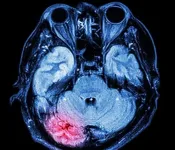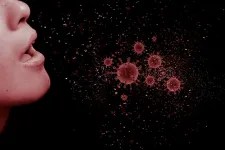(Press-News.org) Researchers at the University of Adelaide have used more than two decades of satellite-derived environmental data to form hypotheses about the possible foraging habitats of pre-contact Aboriginal peoples living in Australia's Western Desert.
As one of the most arid and geographically remote regions of Australia, the Western Desert has always presented severe challenges for human survival. Yet despite the harsh conditions, Aboriginal peoples have maintained an enduring presence, continuously adapting to environmental variations through complex socioeconomic strategies.
In the study published in Scientific Reports, the researchers used Earth Observation data to model the most suitable habitats for traditional foraging activities, identifying where surface water was most abundant and vegetation was greenest to infer which areas of the landscape past Aboriginal peoples were likely to have utilised. The study also drew on previous research into traditional subsistence and settlement practices, enabling researchers to estimate daily foraging range in proximity to water.
Lead author of the study, Postdoctoral Researcher Dr Wallace Boone Law, says the fine scale of the satellite model developed enabled the team to depict the highly variable nature of environmental and hence potential foraging habitats in the Western Desert.
"Where earlier studies depicted the Western Desert as a relatively uniform environment, our study shows the region to be highly dynamic and variable, both in its environmental conditions and foraging potential," Dr Law said.
"For example, desert dunefields were once thought to have been a periodic barrier to occupation, but our work shows this is not true for all sandridge deserts. Some dunefield areas offer good foraging habitats, particularly amongst interdunal swale areas.
"However, we also found that there are large, impoverished regions of the Western Desert that would have been extremely challenging for survival, based on terrain ruggedness and access to food and water resources.
"We believe it is likely that some of these poorly-suited foraging areas would have been difficult for survival for the past 21,000 years, and because Aboriginal peoples were highly knowledgeable about the distribution of resources across the Western Desert, we hypothesise those locations would have been rarely used in the past. And further, we predict that the archaeological record of these difficult habitats will point to ephemeral episodes of occupation.
"We suggest that some low-ranked areas of habitat suitability were resource-poor and not economically attractive to foraging activities, even in the best environmental circumstances," said Dr Law.
The researchers hope that archaeologists can use the study to explore many large areas of the Western Desert that have yet to be thoroughly investigated.
"Our findings highlight how future models of forager land use can be integrated with Earth Observation data to better comprehend the environmental complexity and fine scale of resource variability in these vast, remote and diverse places," said Dr Law.
"We hope our research into the changing environment in pre-contact Australia will assist with fostering a new era of research in partnership with Indigenous communities to provide further understanding of the industrious, versatile and resilient Aboriginal peoples of the Western Desert."
INFORMATION:
Focal segmental glomerulosclerosis (FSGS) is a rare form of kidney inflammation (glomerulonephritis) in which the glomeruli become increasingly scarred (sclerotic), leading to progressive loss of kidney function. Dysregulation of the immune system plays a role in pathogenesis, which is why immunosuppressive therapy with glucocorticoids can be successful, alongside supportive therapy (especially blocking of the renin-angiotensin system with ACE inhibitors or angiotensin receptor blockers). Many patients nevertheless require dialysis in the course of the disease. New therapeutic approaches that stabilize or protect kidney function ...
Accumulation of water in the lungs (lungcongestion) is a common condition in hemodialysis patients, particularly in those at high cardiovascular risk, like those presenting coronary artery disease and/or heart failure. This alteration can be detected in an X-ray image, but cannot be heard easily with a stethoscope. When the congestion becomes so severe that fluid floods the alveoli ('alveolar pulmonary edema'), the sound of rattling breathing can be heard (and without a stethoscope at a later stage). Then, at the latest, pulmonary gas exchange is severely impaired, and the patients experience shortness of breath or even fear of death.
For hemodialysis patients, ...
The battle against antibiotic-resistant bacteria: A new study at Tel Aviv University revealed a mechanism through which "good" viruses can attack the systems of "bad" bacteria, destroy them and block their reproduction. The researchers demonstrated that the "good" virus (bacteriophage) is able to block the replication mechanism of the bacteria's DNA without damaging its own, and note that the ability to distinguish between oneself and others is crucial in nature. They explain that their discovery reveals one more fascinating aspect of the mutual relations between bacteria and bacteriophages and may ...
IgA nephropathy (IgAN) is a chronic kidney disease occurring in young adults and is one of the most common reasons for kidney transplantation in this age group. IgAN is the most common form of glomerulonephritis (GN), i.e., immunologically induced inflammation of the renal glomeruli. It is characterized by glomerular deposition of immune complexes containing immunoglobulin A (IgA), and by a complex inflammatory response and progressive loss of kidney function. For many decades, IgAN has therefore been treated with anti-inflammatory or strong immunosuppressive agents. ...
Wider clean chemistry applications of the extraordinary Vortex Fluidic Device - invented by Flinders University's Professor Colin Raston - are likely in the wake of new research that has been published outlining the seemingly endless possible uses.
The defining paper on understanding fluid flow in the Vortex Fluidic Device has just been comprehensively explained in an article published in Nanoscale Advances (DOI: 10.1039/D1NA00195G).
This took more than 100,000 experiments to work out - and Professor Raston hopes this publication will encourage more researchers to embrace the VFD and explore yet more innovative applications for this ingenious device.
"How fluid flows is one of the grand challenges of science," says Professor Raston. "What we have been ...
A world-first international study led by the University of South Australia has identified a new drug to stop athletes developing dementia after sustaining repeated head injuries in their career.
The link between concussion and neurogenerative diseases is well established, but new research findings could halt the progression of chronic traumatic encephalopathy (CTE) in sportspeople who sustain repeated blows to the head.
CTE is a progressive and fatal brain disease associated with the accumulation of a protein known as hyperphosphorylated tau which affects cognition and behaviour.
In a paper published in Scientific Reports, ...
LA JOLLA, CALIF. - June 7, 2021 - A preclinical study led by scientists at Sanford Burnham Prebys has established that AAV8-TNAP-D10--a gene therapy that replaces a key enzyme found in bone--may be a safe and effective single-dose treatment for hypophosphatasia (HPP). The study, published in the Journal of Bone and Mineral Research and performed in a murine model of the disease, further supports advancing the therapy toward human clinical trials.
"This is the most promising gene therapy study to date demonstrating a successful increase in life span, and improvement ...
Monash University researchers have provided a fundamental advance regarding how T cells become activated when encountering pathogens such as viruses.
The recent study published in Science, co-led by Professor Nicole La Gruta, Professor Jamie Rossjohn and Professor Stephanie Gras with first author Dr Pirooz Zareie from the Monash Biomedicine Discovery Institute, have found that T Cells need to recognise pathogens in a particular orientation in order to receive a strong activating signal.
T cells play a key role in the immune system by eliminating invading pathogens, such as viruses, and it is crucial to understand ...
When we inhale isolated coronavirus particles, more than 65% reach the deepest region of our lungs where damage to cells can lead to low blood oxygen levels, new research has discovered, and more of these aerosols reach the right lung than the left.
Lead author of the study Dr Saidul Islam, from the University of Technology Sydney, said while previous research has revealed how virus aerosols travel through the upper airways including the nose, mouth and throat - this study was the first to examine how they flow through the lower lungs.
"Our ...
Finding the hypothetical particle axion could mean finding out for the first time what happened in the Universe a second after the Big Bang, suggests a new study published in Physical Review D on June 7.
How far back into the Universe's past can we look today? In the electromagnetic spectrum, observations of the Cosmic Microwave Background -- commonly referred to as the CMB -- allow us to see back almost 14 billion years to when the Universe cooled sufficiently for protons and electrons to combine and form neutral hydrogen. The CMB has taught us an inordinate amount about the evolution of the cosmos, but photons in the CMB were released 400,000 years after the Big Bang making it extremely challenging to learn about the history of ...






